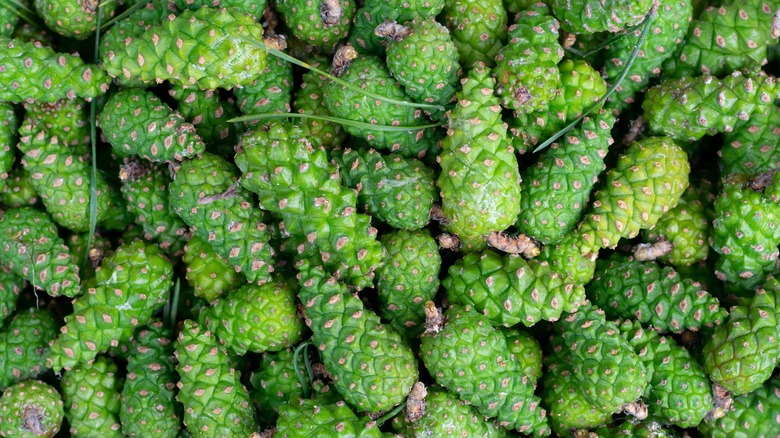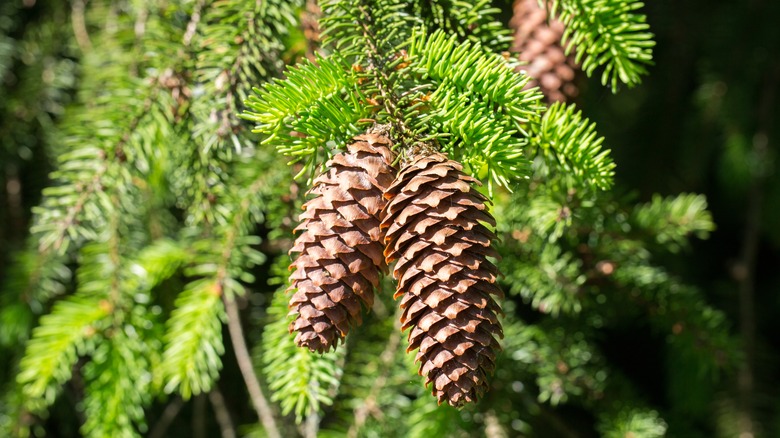Is It Dangerous To Eat Pine Cones?
Coming to a forest near you, meet the hottest new food trend: foraging. Business Insider reports that since the dawn of the pandemic, people have turned to the ancient practice as a way to find food when grocery stores couldn't deliver. On social media, foraging experts have gained millions of followers. In fact, even King Charles loves to forage at Balmoral Castle. If you're ready to do as the royals do and jump on the foraging bandwagon, an approachable place to start is with the pine tree.
In the world of foraging, the pine tree is a true "giving tree." According to Hunter Angler Gardener Cook, you can use pine needles to make an aromatic and vitamin-C-packed tea or glazing syrup, while the pine pollen can be ground and added to pasta and other flour-based doughs. Then there's the pine nuts, the mildly sweet seed that serves as the nutty backbone of pesto. As Practical Self Reliance notes, even the inner bark can provide a source of nutrient-rich flour.
All of this is dependent on the pine tree type, as there are several varieties that are either toxic or inedible to humans, such as the Yew tree, Ponderosa Pine, and Norfolk Island Pine (via Pro Garden Tips). The White Pine, Yellow Birch, Red Spruce, and Balsam Fir are all safe for consumption, offering bark, pine needles, and seeds to the hungry forager.
But what of the pine cone? Can it be consumed as another culinary gift of the pine tree?
The pine cone principle
Evolutionarily speaking, pine cones were meant to be tough to eat. Why? According to the Smithsonian, you can partly blame the dinosaurs. Pine cones were an important part of the Jurassic herbivore diet, and the pine trees fought back with the slow and steady process of natural selection. As time went on, pine cones became scalier and rougher. But there is a sweet spot in the growth period when pine cones can be eaten.
Forager Chef writes that green pine cones, the young and fresh version of a budding pine cone, are tender and palatable enough to eat. These juvenile pine cones are diminutive in size—no larger than a pinky nail. Forager Chef also claims that these young pine cones are traditionally used in varenye, a Caucasus and Russian delicacy. Comprised of green pine cones cooked in syrup, varenye has long been lauded for its medicinal properties, though it has a decidedly resinous taste.
If you're looking to try them plain, MasterClass recommends you boil the green pine cones to soften them up before eating. Still, MasterClass notes that while young green pine cones are edible when made this way, they're also hard to digest. So, it's not dangerous to eat but can still cause some general discomfort.
All in all, those looking to bring out the best of the pine tree should stick to the needles and seeds.

